I enjoy the huge topic here on the forum dealing with Studebaker dealerships. But I'm wondering what the automotive world was like back, in say the 50's when it came to the other auto dealerships. Studebaker dealerships seemed to be rather small size and in perhaps in less populated areas. Were the big 3 and other independent dealerships really bigger? Did they have to buy their vehicles from the companies ans what would have been the typical number of new cars on the lots? Today, that number could easily be in the hundreds for just about any dealership. As this post probably cries out, I'm younger than most of the experts here, so I ask this due to being naive.
Announcement
Collapse
No announcement yet.
Studebaker vs. the world
Collapse
X
-
Around the Los Angeles area I remember 3 or 4 dealerships. One in Arcadia. Frost and French in downtown at Western and 3rd. St. There was one in Santa Monica on 3rd. St. that the property was owned by a guy named Shell that had a pawn shop-speed shop, but owned half of Santa Monica. And Keys Motors on Lankershime Blvd. in North Hollywood. The largest didn't have more than 6 or 7 cars at anytime.
-
Alan, Frank H. Afton was way larger than all three put together! There would typically be at least 35 to 50 at any one time throughout the '50's and '60's in Inglewood, CA. So larger Dealers DID exist, but none stocked as many as they do now.
In the early 1950's Les Bacon in Hermosa Beach had over a hundred at a time.
In 1964 after the shutdown in SB, Sav-On Cars in Torrance AND Manhattan Beach had 6 to 8 Avantis, and over a hundred Studes. Total on their two lots when they purchased about ALL of Studebakers' leftover 1964's, canceled orders and many East Coast Dealers' unwanted stock. Sold em all, at a discount!
I remember reading the price stickers and was amazed at all the East Coast Dealer names on these cars.
I take it you are not from the Westside! [:0]

StudeRich at Studebakers Northwest -Ferndale,WAStudeRich
Second Generation Stude Driver,
Proud '54 Starliner Owner
SDC Member Since 1967
Comment
-
 Hi, Don; Nice to see you back on the forum. In the 1950s, the average new-car dealership was much smaller than today, but there were many more of them.
Hi, Don; Nice to see you back on the forum. In the 1950s, the average new-car dealership was much smaller than today, but there were many more of them.
It's not unlike service (gas) stations: In the 1950s, few gas stations had more than 4 pumps (2 regular and 2 Ethyl), and many stations had only one island with only two pumps; one of each. Sure, there were mega stations in big metropolitan areas, but there were so many 2 or 4-pump stations in every small town that the average of all stations probably had no more than four pumps.
Today, of course, look at the size of the average gas station, yet there are far fewer of them. It's exactly the same for new car dealerships. For better or worse, the companies don't want to service smaller dealers and will allow many franchises to die once a grandfather clause leaves no one in the family who wants the franchise, if they aren't squeezed out ahead of time.
The small town where I grew up (Paris IL) is typical. My father and uncle bought the Packard franchise there in June 1953. Paris was a town of 10,000 population, the biggest town in, and the county seat of, Edgar County IL. Edgar is against the eastern border of Illinois about halfway down the state.
The following individual dealerships were operating in Paris IL as of June 1953:
1. Chevrolet/Cadillac
2. Pontiac
3. Oldsmobile/Buick
4. Ford/Mercury
5. Dodge/Plymouth
6. Chrysler/Plymouth
7. DeSoto/Plymouth
8. Studebaker
9. Packard/Willys
Missing were outlets for Hudson and Nash, but Dad and Uncle Milt added Nash less than a year later. There had been a Hudson dealer in town after WWII, but I don't believe he was still in business in June 1953.
Today, as you would expect, there are only three dealers in the town; Ford products, Chrysler/Jeep products, and General Motors products. But on their lots as I type this, there are probably more cars total than there were in stock at those 9 dealers in June 1953.
And that's not because the town has grown. In fact, it is smaller. When we arrived, the population sign at the edge of town said, IIRC, 10,500. Again IIRC, the sign now says either 9,800 or 9,400.
The 1953 list I cited above brings up an unusually marketing oddity from the 1950s. Chrysler had virtually no free-standing Plymouth dealers; they were always dualed with Chrysler or Dodge or DeSoto. For that reason, during much of the fifties, Plymouth actually had more dealers than either Ford or Chevrolet! True. BP
BP
Edited for a missing letter! We've got to quit saying, "How stupid can you be?" Too many people are taking it as a challenge.
We've got to quit saying, "How stupid can you be?" Too many people are taking it as a challenge. 
G. K. Chesterton: This triangle of truisms, of father, mother, and child, cannot be destroyed; it can only destroy those civilizations which disregard it.
Comment
-
Considering the dealer I posted(Beardstown, IL), there's an interesting story about these smaller dealers from this area:
This area is not known for too many large retail outlets. It's not known for the auto malls like we have up here around Chicago. Beardstown is a small farming community with ties to the railroad and coal outfits. The small size of the town meant that the retail outlets had to develop a tie to the community, and I'll tell ya later on.
There were a couple dealerships in this area, one that still functions today. I think it was a Studebaker dealer, a GM dealer, and a Ford dealer. These dealers served the community by selling low cost, simple vehicles, that the farmers and the community could use. In turn they received a constant stream of business into the showroom. Well, one day a luxury dealer moved into town. I think it was Jaguar or Chrysler or one of those. They would cater to the high end folk in the surrounding area by offering luxury cars. Well, about a month or two later the business started to suffer. You know what happens when you offer a product the rest of the populace can't afford and your model tailors to the all of 2 people of this type in town? You start losing money, which is what they started to do. Along about 6 months to a year later they packed up and left town, couldn't generate enough business.
I believe the Studebaker dealership lasted up until the plant closed, and this building changed hands a couple of times before having the front go to become a tavern. The other dealerships, though remain to this day, at least in the spot for as long as I can remember.
In this case it was a case of an individual had to know who they were selling to, and how much they were going to need, because their group they're selling to wasn't going to be extraordinarily large or wealthy. [ )]
)]
[img=left]http://i158.photobucket.com/albums/t102/PlainBrownR2/My%201950%202r5%20Studebaker%20Pickup%20with%20turbocharger/P1000137-1.jpg[/img=left][img=left]http://i158.photobucket.com/albums/t102/PlainBrownR2/My%201950%202r5%20Studebaker%20Pickup%20with%20turbocharger/P1000145-1.jpg[/img=left][IMG=right]http://i158.photobucket.com/albums/t102/PlainBrownR2/Ex%20Studebaker%20Plant%20Locomotive/P1000578-1.jpg[/IMG=right]
[IMG=right]http://i158.photobucket.com/albums/t102/PlainBrownR2/My%201964%20Studebaker%20Commander%20R2/P1010168.jpg[/IMG=right]
1964 Studebaker Commander R2 clone
1963 Studebaker Daytona Hardtop with no engine or transmission
1950 Studebaker 2R5 w/170 six cylinder and 3spd OD
1955 Studebaker Commander Hardtop w/289 and 3spd OD and Megasquirt port fuel injection(among other things)
Comment
-
^^^^^^^^^^^^^^^^^^^^^^^^^^^^^^^^^^^^^^^^^^^^^^^^^^^^^^^^^^^^^^^^^^^^^^^^^^^^^^^^ ^^^^^^^^^^^^^^^^^^^^^^^^quote:Originally posted by BobPalma
Today, of course, look at the size of the average gas station, yet there are far fewer of them. It's exactly the same for new car dealerships. For better or worse, the companies don't want to service smaller dealers and will allow many franchises to die once a grandfather clause leaves no one in the family who wants the
So true, as I saw it happen from the inside. My town had a number of dealships over the years and they all had something in common-they were small. When I arrived in Louisa in 1967, there were four (4) dealers remaining- Ford, GMC (stand alone), Chrysler-Plymouth, and Rambler-IH. At any one time, these dealers had 8 to 15 new units on their lots during that era.
After retiring from my profession in 1997, I was offered a "part-time" salesman's job at the Chrysler-Plymouth-Dodge-Jeep dealer. This was an old line dealership, established in 1935, in a facility built in 1940 and was now owned by the founder's son. The dealership employed three mechanics, one full-time salesman, a secretary/office manager, and an owner who was there every day. As a newby salesman, it didn't take long for me to realize it was going to be full-time job. This dealership had many faithful customers who liked the 'old style, friendly' atmosphere. The dealership sold approximately 220 new cars/trucks per year plus about the same number of used cars. As a 'part timer', I sold a lot of vehicles in the five years I worked there, 1997-2002. It was a great place to work. I might add that I never had to lie to a customer because I was under pressure to sell.
In late 2001, the 72 year old, never-married owner developed a medical problem and decided to sell the business and retire to Florida. It was a profitable business, in an old building, but with an excellent reputataion. Four potential buyers came forward during the winter of 2001-2002. The owner was so optimistic he served notice to the Virginia Division of Motor Vehicles that he would turn in his, and ours, salesman license on March 1, 2002. He also notified Chrysler he would give up his franchises on the same date. During the last week of February, it looked as if one of two buyers would get financing and the owner would sell the business and the personal property involved. On March 1, all buyers were gone.
We now know that Chrysler chased away the buyers because Chrysler did not want to continue servicing a small dealership, they did not want someone else in the old building, and they wanted the Louisa business to flow to the mega-dealers in Richmond and Charlottesville. If a new owner had been a family member or a franchised Chrysler dealer, they may have been able to buy. As it was, the owner lost a lot of $$$ because the factory interferred, by discouraging the propective buyers, and the businss died on March 1.
As of today, we still a Ford dealer who sells a volumn of ovals and the stand-alone GMC dealer. The Ford dealer also owns a mega-dealership in the Washington DC area. When the GMC dealer retires, he will get the same treatment as the Chrysler dealer. The Town of Louisa has lost it's home grown, small dealerships where service, friendliness, and honesty meant the most to customers.[V]

Frank Drumheller
Louisa, VA
60S-W6
1948 M16-52 Boyer fire truck
Comment
-
My story is much like Bob Palma's. My hometown in Southeast Kansas had a population of 10,000. When I was growing up there was a Chrysler-Plymouth dealer immediately next door to the Dodge-Plymouth dealer, a stand-alone Buick dealer a half block from the Chrysler dealer and a stand-alone Nash dealer a block away. Then there was a stand-alone Pontiac dealer, an Oldsmobile-Cadillac dealer, a stand-alone Chevrolet dealer, a stand-alone Ford dealer, a stand-alone Lincoln-Mercury dealer, a stand-alone Willys dealer and another dealer who sold Kaiser-Fraser and Packards. The Ford and Chevrolet dealers might have had six or eight new cars, the others not more than two or three at any one time. There was no Studebaker dealer though the Studebaker dealer in the next town (19 miles) opened a storefront branch in my town very breifly. I remember seeing my first Hawk there, a two-tone green Power Hawk. Now there is a single GM dealer with all lines (except Hummer and Saturn)- probably stocks 50 new cars, a Chrysler-Dodge-Jeep dealer with probably 25 new cars and a Ford-Lincoln-Mercury dealer with maybe 30 new cars. All three are in large, modern buildings on highways at the edge of town. All the old dealer buildings have long gone to other uses.
The dealer where I bought my first new car and first Studebaker, Don Schmidt in Wichita stocked probably 30 to 40 Studebakers. The largest dealership in Kansas City, MO stocked probably about the same. The dealer where I bought my '64 Wagonaire, Joe Egle in Olathe, KS only stocked maybe three Studebakers (but he also sold BMC cars and stocked probably 20 of them.
Paul Johnson, Wild and Wonderful West Virginia
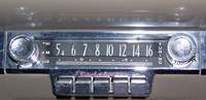
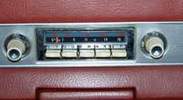
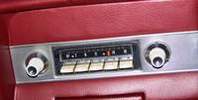
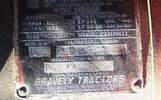
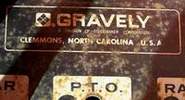 Paul Johnson, Wild and Wonderful West Virginia.
Paul Johnson, Wild and Wonderful West Virginia.
'64 Daytona Wagonaire, '64 Avanti R-1, Museum R-4 engine, '72 Gravely Model 430 with Onan engine
Comment
-
quote:Originally posted by studelark
When the GMC dealer retires, he will get the same treatment as the Chrysler dealer. The Town of Louisa has lost it's home grown, small dealerships where service, friendliness, and honesty meant the most to customers.[V]

Frank Drumheller
 Well-spoken, Frank, and spot-on. (Now I have to scoot over to MapQuest and find out where Louisa is located...)
Well-spoken, Frank, and spot-on. (Now I have to scoot over to MapQuest and find out where Louisa is located...)  BP
BP
 We've got to quit saying, "How stupid can you be?" Too many people are taking it as a challenge.
We've got to quit saying, "How stupid can you be?" Too many people are taking it as a challenge. 
G. K. Chesterton: This triangle of truisms, of father, mother, and child, cannot be destroyed; it can only destroy those civilizations which disregard it.
Comment
-
The main difference between the dealership world today and that of 40-50 years ago is that the factories have much more control over the "buyer's perception and experience". It's much more sterile and institutional now, because in many ways buyers have voted for it with their automotive dollars. Small, marginal dealership points are looked at as a hugely ineffective and costly way to distribute a very small number of units. And, those little surveys people fill out about their ownership experience show most "consumers" want to buy from a large dealer entity, because they want a spotless facility and staff of specialists to stand behind their purchase. This is the main reason Toyota has been able to compete with fewer than 1/2 the number of dealers as the largest of the Big Three. The floor planning costs, diagnostic tool expense, and employee costs, both for training and compensation, are huge compared to what they were 40 years ago. The one horse operator is quickly fading away.
The only manufacturer who I have seen bucking this trend is Suzuki, who like Studebaker did in the 1950's and 60's, has gone to a couple very successful used car outlets here in Northern Indiana, and talked them in to taking on their new car franchise. It will be interesting to see how successful this is long term.
Studebaker and the independents were looking for anyone who could hang a shingle and sell a few cars after the success of the Lark, and their zeal to add numbers to the dealer ranks has been discussed before on the forum. The fact Studebaker was often dualed with farm equipment, or even a kitchen appliance maker in extreme cases, meant they had dealers who weren't in the car business as their main source of revenue, but merely as a sideline or even hobby. These dealers often lacked the financing to stock vehicles like the Ford and GM Supermarket Style dealers that were dominating the market. While the effectiveness of Studebaker points was being watered down, the mainline dealers kept getting bigger and stronger.
As a 25 years ago veteran of a small town Chrysler dealer who has been acquired and now is part of a huge chain, I miss the days of the old small town dealer principal who sponsored your kid's ball team, and supplied cars to the school for driver's education. It's another part of Americana like Route 66 that once is gone, will never quite be recreated.
Studebaker's problem that came from adding so many dealers was, they often couldn't afford to sponsor that ball team, or supply cars for driver's education. It was a stretch for them to stock a single car, and they often sold from brochures against the bigger dealers who had what you were interested in available to test drive instantly.
Comment
-
 Good points and a good summary, Kevin (556063). I guess people who never had the experience buying from a small, local dealer will never know what they missed, but it's their loss.[V]
Good points and a good summary, Kevin (556063). I guess people who never had the experience buying from a small, local dealer will never know what they missed, but it's their loss.[V]
The smallish Blanck Chevrolet here in Brownsburg, where we bought our new Impala in April, is now in its 81st(!) year, operated by the third Blanck generation. But you can be sure that when current owner Dave Blanck retires, the new facility they built in 1954/1955, which was enlarged and heavily remodeled circa 1972, will probably be scraped off faster than if a tornado went through town.
And in my never-so-humble opinion, that's a real shame.
Good memories, Kevin. Do you have any memories of one or more Studebaker dealers in Plymouth IN? BP
BP
 We've got to quit saying, "How stupid can you be?" Too many people are taking it as a challenge.
We've got to quit saying, "How stupid can you be?" Too many people are taking it as a challenge. 
G. K. Chesterton: This triangle of truisms, of father, mother, and child, cannot be destroyed; it can only destroy those civilizations which disregard it.
Comment
-
I was born the same year South Bend closed, so I was three when the final ending came in 1966. I have no memories of Studebaker dealers being in business. In my hometown, Rochester, IN, Studebaker was sold with Lincoln-Mercury, and the dealer's daughter in law was my third grade teacher. We bought a used IH garden tractor at a 4-H benefit auction from the Barkman family that ran Barkman Motors, the Studebaker/L-M dealer. I had a chance to meet and talk about the business with the elder Mr. Barkman about 1979, and this was close to the time I bought my 55 Champion. I tried to buy his low mileage pristine black '59 Lark 2dr when we came to pick up that garden tractor, but he wouldn't sell the Lark.
Mr. Barkman told me he just couldn't sell Studebakers at all after 1961, and he dropped them sometime in 1962. Mind you, this was in a small town 40 miles from South Bend with some people living there who commuted to work at Studebaker. The fact banks were shy to lend money to floorplan them, and that Mercury was introducing the Comet all played into the decision. He said he picked Studebaker up in the early 1950's, had a number of good years with them in the 50's, but after the Lark peaked, the writing was on the wall. His business still survives, and the building stands today and is still in business as Rochester Ford/ Lincoln-Mercury. I have no photos of the building when it was a Studebaker dealership.
I had no clues or trails on the Studebaker dealer in Plymouth until the photo of the John Klapp dealership during the flood of 1954 was recently published in the Plymouth Newspaper. I had no idea the building I posted the photo of in the Dealer thread served as a car dealership before that article! (Upon a close inspection, I discovered the mounting brackets for the Studebaker sign are still on the roof of that building!).
It seems before the advent of yellow pages ads, some small town dealers were listed in the phone book only by their company name, and not their factory affiliation. Those were certainly different times!
Comment
-
The story of what happened in Rochester was another nail in the coffin for Studebaker dealers that were dualled with Big Three franchises. Studebaker carved a market niche with the compact Lark, and once the Big Three had their own compacts, there was not a good reason for those relatively strong dual dealerships to keep Studebaker. I know I've heard stories about the factories putting pressure on Studebaker duals to drop Studebaker, but the market forces probably had more to do with those successful dealers dropping Studebaker. Either way, Studebaker was forced out of some good dealerships in those critical 1960-63 years, and they lost some representation that was impossible to replace with representation of similar quality. The fact they actually increased their number of outlets during that time shows they did not take market developments sitting down, and they tried hard to counteract what was happening. The fact they ended up with too many dealers who ordered a car only when they had it sold was more of a result of what was happening to them in the market, and not due to a management strategy or decision. They were trying to build from scratch, and time was not on their side.
Comment
-
Dave Meachum of Lewisburg, PA, former small-town Studebaker dealer, told me that a big inventory in a small town would be 12-15 new cars and 2 or 3 trucks. He stated that even the nearby Ford and Chevy dealers didn't carry large inventories. (See Turning Wheels article about the Meachum Motor Company dealership in the May, 2005 Turning Wheels.)
Of course, that was then and this is now. Yes, in the bigger cities there were some larger Studebaker dealers. But as time went on, smaller dealers (of all makes) went by the wayside as the "superstores" sprang up. This was true not only for cars, but for everything else retail as well, when you think about it. (IE, Wal Mart, etc.)
I think we are worse off for the change.
David Bonn
'54 Champion Starliner
Comment
-
Another story I've told before is relevant to this thread. While working at the Chrysler dealer in the 1980's, we wholesaled used cars to a gentleman who had a very successful business in the small town of South Whitley, IN near Fort Wayne. He started business just after WWII, and had a long run in the business. I drove my 55 into the dealership one day I knew he was coming over, hoping it would spark a long conversation about the old days. His reaction to my Studebaker was one I'll never forget.
He immediately told the story about the Studebaker Factory Rep that wouldn't leave him alone. Studebaker courted him as a dealer, and tried their best to get him to take the franchise on. He said he strongly considered it in the 50's, but never pulled the trigger. By the time the 1960's hit, he told me he had to tell the Studebaker Rep that he didn't want to ruin his business by taking on Studebaker, and that didn't even work to keep the guy from bugging him.
There's no better story to describe the uphill battle Studebaker faced in those final years.
Comment
Comment